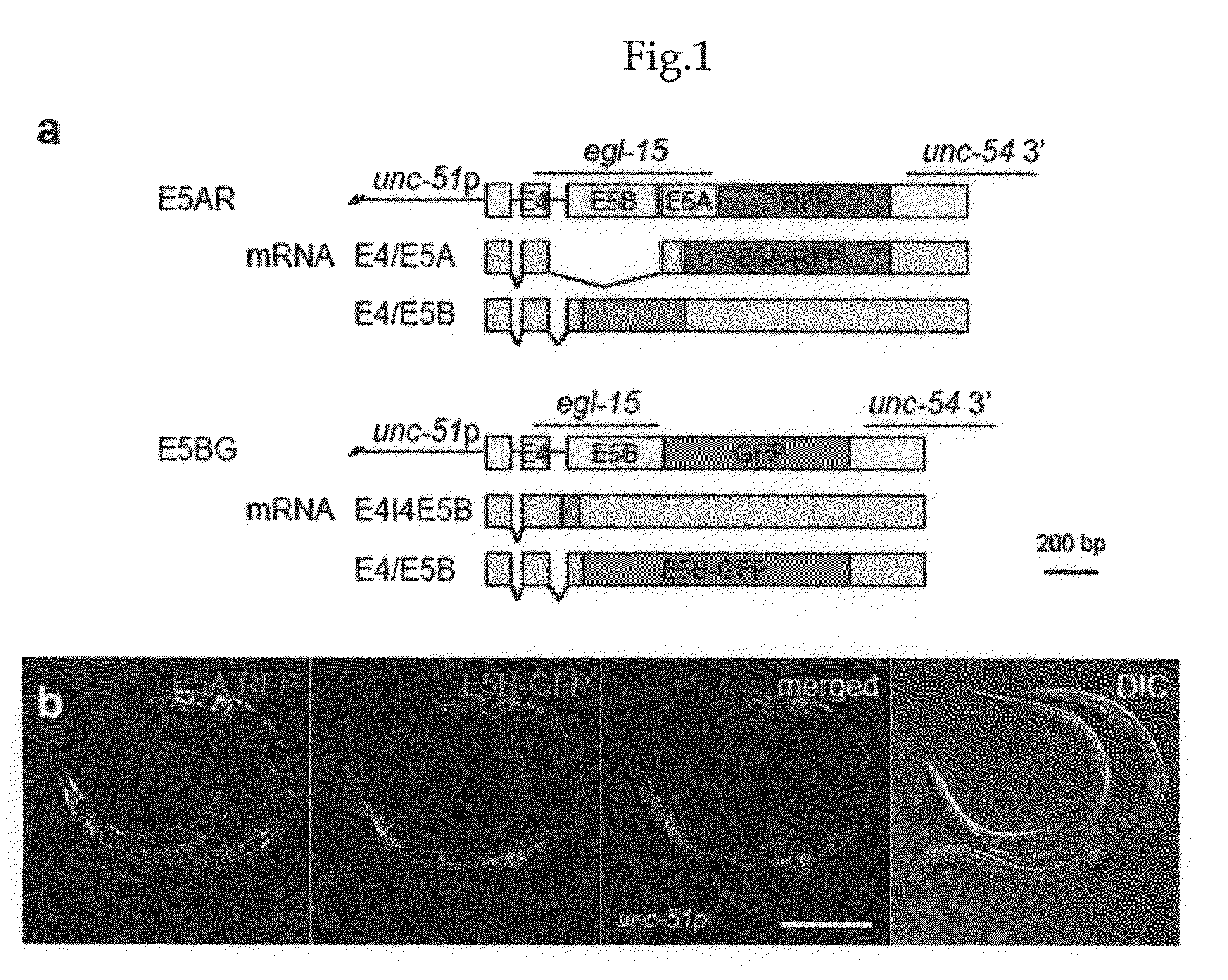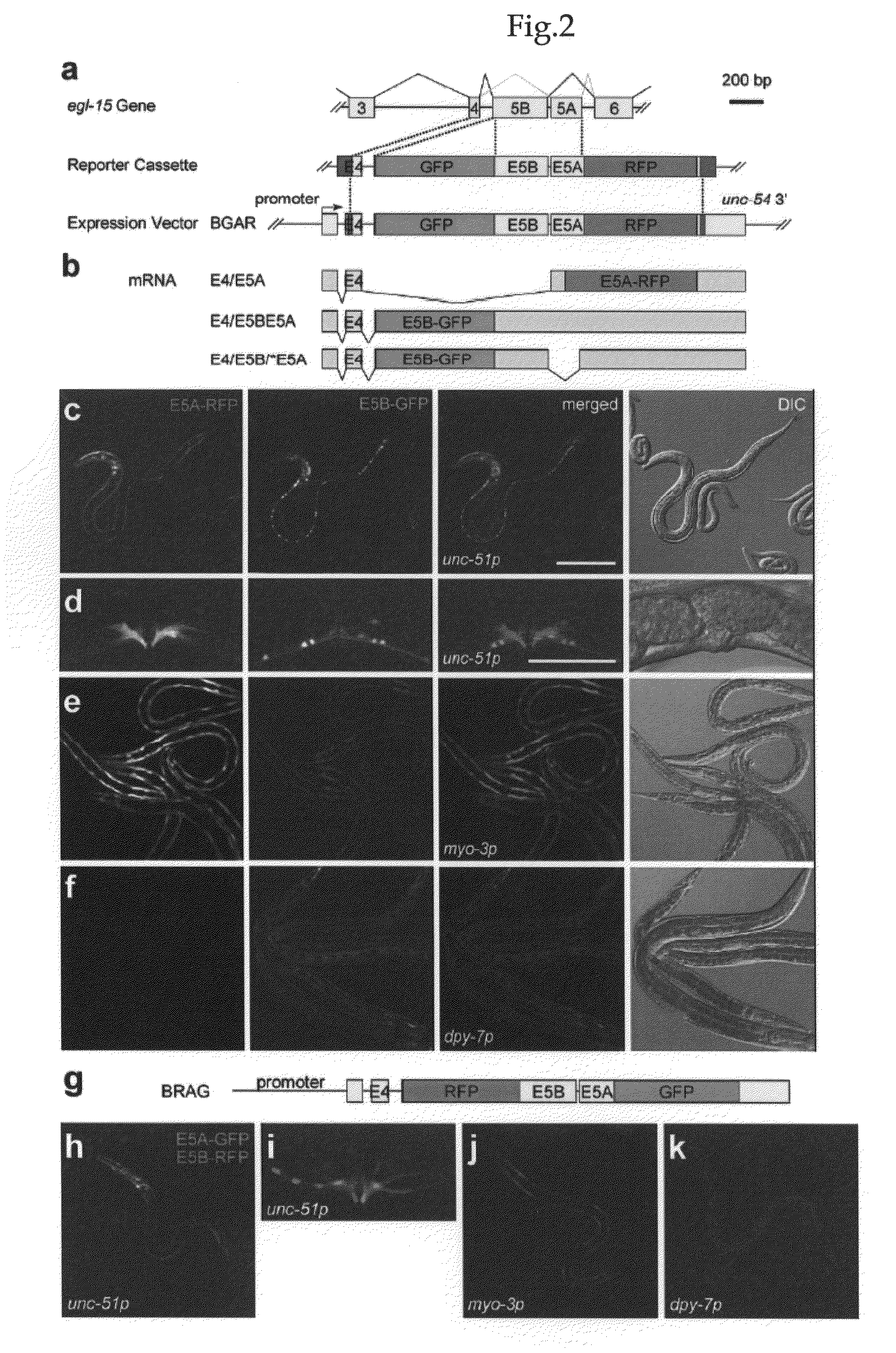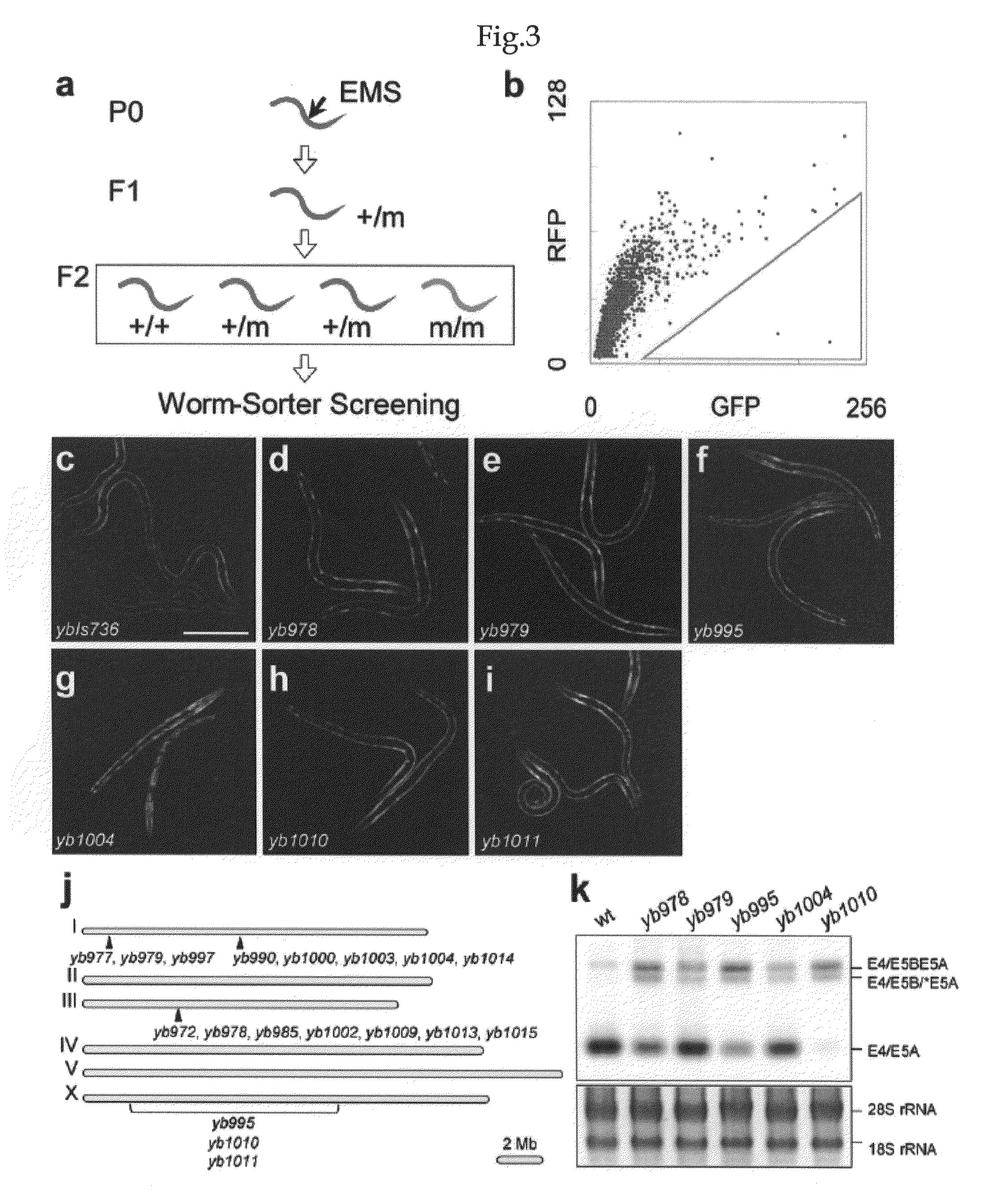Transgenic reporter system that reveals expression profiles and regulation mechanisms of alternative splicing in nematodes
a reporter system and reporter technology, applied in the field of transgenic reporter system that reveals expression profiles and regulation mechanisms of alternative splicing in nematodes, can solve the problems of inability to precisely predict the alternative splicing pattern in each tissue or cell, and the regulation mechanism of specific splicing patterns in living organisms that cannot be fully elucidated in the study in vitro or in cultured cells
- Summary
- Abstract
- Description
- Claims
- Application Information
AI Technical Summary
Benefits of technology
Problems solved by technology
Method used
Image
Examples
example 1
Generation of Transgenic Reporter Worms
[0124]As a model gene, the present inventors utilized egl-15, which encodes a sole homolog of fibroblast growth factor receptor (FGFR) in C. elegans. Its mutually exclusive exons 5A and 5B correspond to an insert within the extracellular domain (Goodman, S. J., Branda, C. S., Robinson, M. K., Burdine, R. D. & Stem, M. J. Alternative splicing affecting a novel domain in the C. elegans EGL-15 FGF receptor confers functional specificity. Development 130, 3757-3766 (2003).). EGL-15 (5B) and its ligand, LET-756 / FGF, exert essential functions, while EGL-15 (5A) is specifically expressed in sex myoblasts, and is required for the directed migration of the cells towards EGL-17 / FGF-releasing cells (Goodman, S. J., Branda, C. S., Robinson, M. K., Burdine, R. D. & Stem, M. J. Alternative splicing affecting a novel domain in the C. elegans EGL-15 FGF receptor confers functional specificity. Development 130, 3757-3766 (2003).).
[0125]In order to monitor the u...
example 2
Screening for Mutants with Altered Expression Profiles
[0133]In order to examine the applicability of the transgenic reporter system constructed in Example 1 to elucidating regulation mechanisms of alternative splicing in vivo, the present inventors screened for mutants defective in the tissue-specific expression of the egl-15 reporter (FIG. 3A). The transgenic worms that predominantly expressed E5A-RFP in body wall muscles (FIG. 3C) were mutagenized, and those worms that expressed a higher level of GFP than the parental strain were isolated by utilizing a fluorescence-assisted worm sorter (FIG. 3B). Of approximately 5×104 genomes screened, the present inventors isolated 18 independent alleles with various expression profiles (FIGS. 3D to 3I). These mutants were classified according to their reporter expression profiles and SNP-based chromosome mapping (FIG. 3J). Two groups with the “Orange” phenotype expressed both E5B-GFP and E5A-RFP throughout the body wall muscles (FIGS. 3E and G...
example 3
Identification of asd-1 Gene
[0136]The present inventors identified a gene corresponding to the Chimera phenotype of the mutant screened in Example 2 (FIG. 3D). By sequencing genomic DNAs from the mutants, the present inventors identified mutations in a predicted gene, R74.5, from all seven alleles classified into the group, and we named the gene asd-1, for alternative-splicing-defective-1. ASD-1 protein has a single RNA recognition motif (RRM) and belongs to the evolutionarily conserved Fox-1 family (FIG. 4A). Vertebrates have three copies of family genes, and Drosophila has one. In C. elegans, FOX-1 (Skipper, M., Milne, C. A. & Hodgkin, J. Genetic and molecular analysis of fox-1, a numerator element involved in Caenorhabditis elegans primary sex determination. Genetics 151, 617-631 (1999).) and SPN-4 (Gomes, J. E. et al. The maternal gene spn-4 encodes a predicted RRM protein required for mitotic spindle orientation and cell fate patterning in early C. elegans embryos. Development ...
PUM
| Property | Measurement | Unit |
|---|---|---|
| pH | aaaaa | aaaaa |
| fluorescent | aaaaa | aaaaa |
| structure | aaaaa | aaaaa |
Abstract
Description
Claims
Application Information
 Login to View More
Login to View More - R&D
- Intellectual Property
- Life Sciences
- Materials
- Tech Scout
- Unparalleled Data Quality
- Higher Quality Content
- 60% Fewer Hallucinations
Browse by: Latest US Patents, China's latest patents, Technical Efficacy Thesaurus, Application Domain, Technology Topic, Popular Technical Reports.
© 2025 PatSnap. All rights reserved.Legal|Privacy policy|Modern Slavery Act Transparency Statement|Sitemap|About US| Contact US: help@patsnap.com



